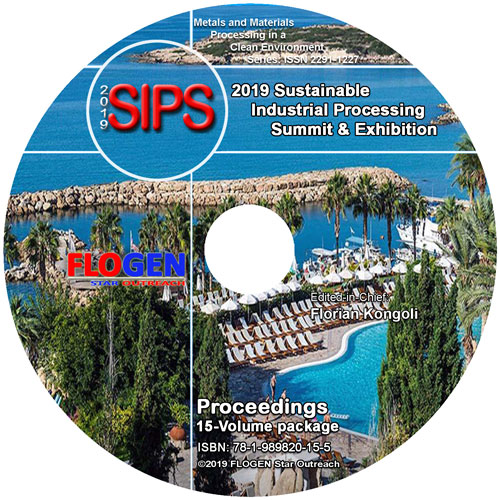2019-Sustainable Industrial Processing Summit
SIPS2019 Volume 8: Usui Intl. Symp. / Advanced Sustainable Iron and Steel Making
| Editors: | F. Kongoli, P. Assis, M.C. Gomez-Marroquin, S. Kitayama, H. Konishi, A. Murao, S. Nomura, H. Ono, H. Saxen, K. Seto, J.I. Tani |
| Publisher: | Flogen Star OUTREACH |
| Publication date: | 20 December 2019 |
| Pages: | 250 pages |
| ISBN: | 978-1-989820-07-0 |
| ISSN: | 2291-1227 (Metals and Materials Processing in a Clean Environment Series) |

CD shopping page
Control of Interfacial Phenomena in Pyrometallurgical Processes through the Use of Acoustic Oscillations
Sergey Komarov1; Takuya Yamamoto1;1TOHOKU UNIVERSITY, Sendai, Japan;
Type of Paper: Keynote
Id Paper: 331
Topic: 2
Abstract:
This work provides results of the author's activity in the field of application of sound and ultrasound waves for controlling interfacial phenomena in steelmaking and aluminum making processes. The corresponding investigations have been carried out using laboratory and industrial scale equipment. The physical basis for controlling interfacial phenomena is the fact that gaseous, liquid and solid phases differ greatly in acoustic impedance. Therefore, when a sound wave is incident on an interface between two phases, the major part of the wave’s energy is reflected from and/or absorbed by the interface, resulting in a number of effects beneficial for pyrometallurgical processes. In steelmaking processes, airborne sound/ultrasound waves provide the possibility to influence the interface mass transfer and thus, to control the rates of steelmaking reactions. Particularly, application of sound waves to the interphase between oxidizing atmosphere and molten Fe-C alloy causes enhanced oxidation of iron and influences thus the decarburization rate. Other examples of sound application effects are control of foaming phenomena and dust formation in steelmaking converters or electric arc furnaces.
In aluminum production, as the melting point of aluminum is much lower than iron, the ultrasonic vibrations can be introduced directly in the molten aluminum alloys using refractory metal or ceramics sonotrodes. This makes it possible to transmit the ultrasound energy directly to the liquid-solid interface and thus, to break and disperse various particulates in the melt before or during its solidification. Examples include, but are not limited to, dispersion of refiner particles and fragmentation of growing dendrites. This offers an attractive way to control macrostructure and microstructure of aluminum alloys in casting processes. Besides, this technique is applicable to the development of new aluminum alloys and composite materials.